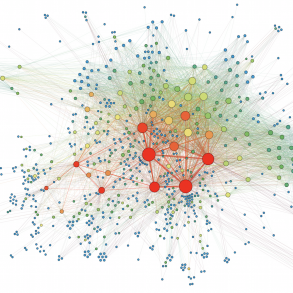Originally published as one article at virtualcommunitiesforimpact.org
This is Part 3 of 3 parts. Part 1 is here. Part 2 is here.
When making decisions as a virtual community, conflicts will arise. Having a conflict resolution process in place will help you respond when members disagree, have conflict, or violate the community’s terms and values.
Conflict Resolution
Community managers must have a conflict resolution process prepared before a conflict or disagreement occurs. Resolution processes and procedures help to restore peace after a violation and (in the best case scenario) use the breach to learn and grow.
If the governance agreements of the community are broken, you can rely on the resolution process to determine what happened, solve the problem, and steward the values of the community. Conflict resolution can also foster collective learning.
Conflict is natural in a virtual community. Do not avoid confronting or addressing conflicts in your virtual community. Avoidance endangers the health of the community and can create additional issues. If other community members see that problematic behaviour goes unaddressed, they may test the boundaries, especially if was not clearly communicated that this behaviour or action is not permitted.
To limit the number of conflicts that occur, get help from a trusted facilitator with the right skillset to steward the creation of collective agreements. When conflicts happen, address them directly. Install a mediator as soon as possible and talk to the parties face-to-face or with online meetings. Avoid written communication like emails or chats. This can lead to misinterpretation and new misunderstandings.
Conflict Resolution Steps – from Jaime Arredondo’s Open Communities’ Playbook:
- Stay calm and reassure
Rely on a trusted mediator. - Get the facts
The mediator will solicit information to find out what happened and understand the different perspectives of the conflict. - Discuss and solve
In one-on-one conversations or in a smaller group depending on the nature of the conflict. - Document and share the solution as appropriate
Share only with those involved or, if the conflict had a larger impact, share appropriate details with the virtual community. Avoid blaming language and keep your communications focused on facts and outcomes. - Reflect and maintain
Seek to understand why the conflict happened and explore options and changes that could help avoid a similar issue in the future.
Conflicts can range from misunderstandings to repeated use of inappropriate language to violation of the ground rules of the community. For example, money spent on something that was not agreed on or even seen as “misused”. Conflicts are often in the middle of this spectrum, based on misunderstanding or different views.
For example:if a community has economic activity; whose customer is it?The person that first gets in touch with the client or the expert on a given topic; why does a certain project go to a certain person and not another?
Resolving conflicts in a constructive way will be much easier if a culture of non-violent communication is explicitly built into your virtual community and expressly understood by its members.
Require your members to use techniques that allow them to express themselves in a constructive and respectful way. Ensure your community’s commitment to non-violent, constructive communication is clearly communicated to all members.
* “All content on this website is released under the Creative Commons license Attribution-NonCommercial-
Some paragraph spacing and Featured Image added by Enlivening Edge Magazine.




